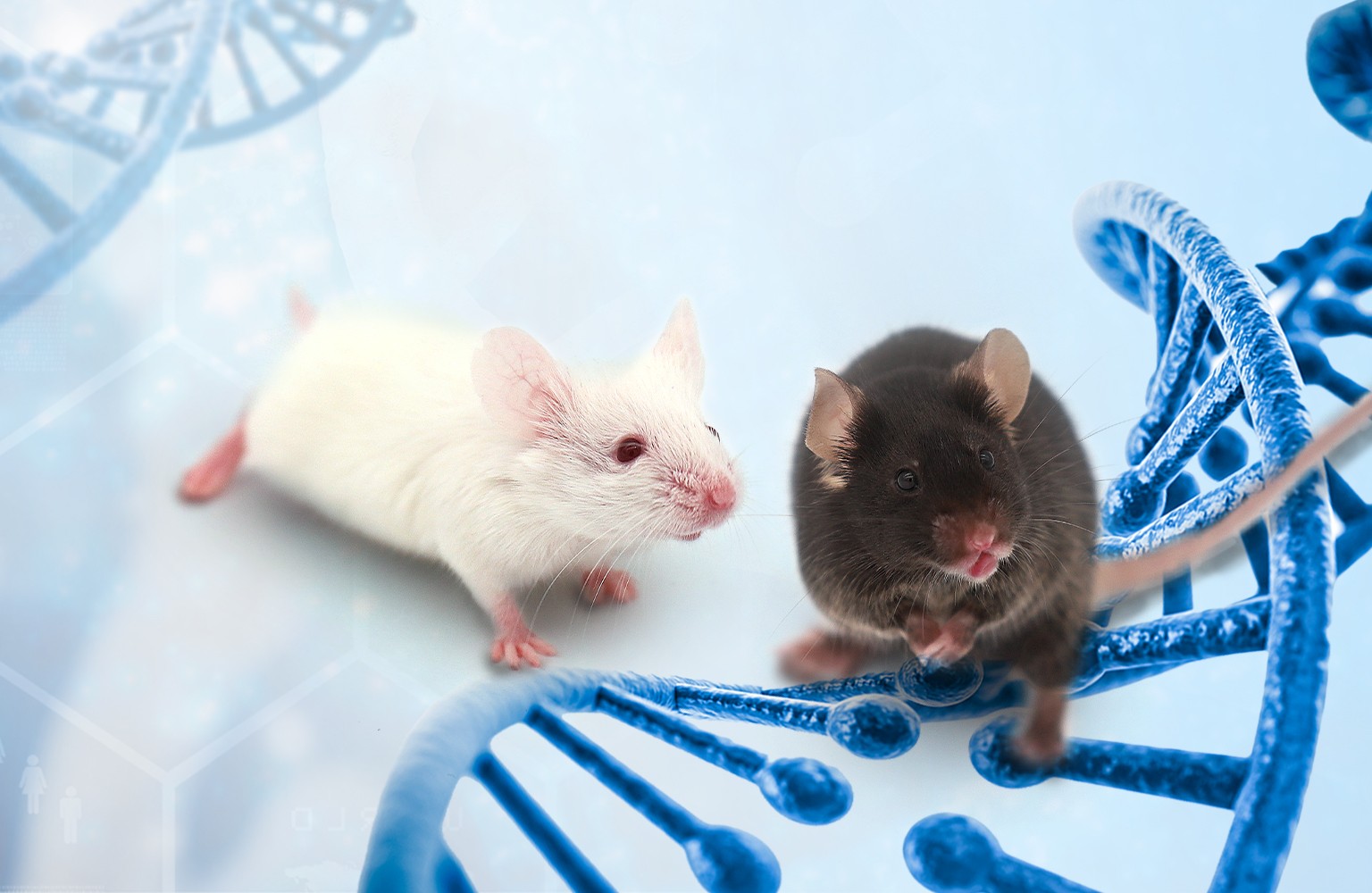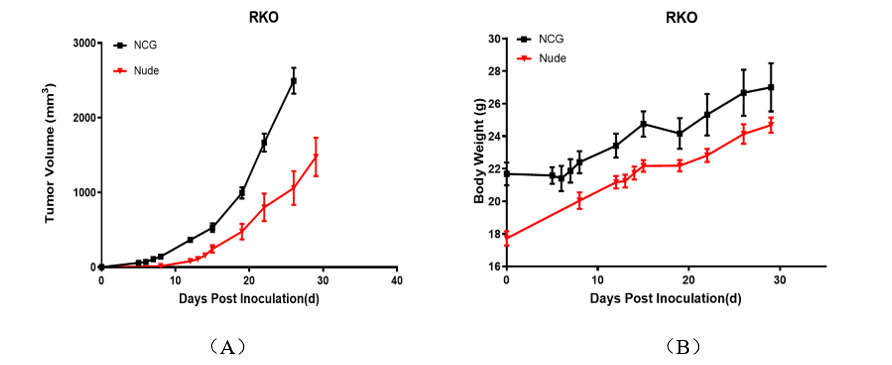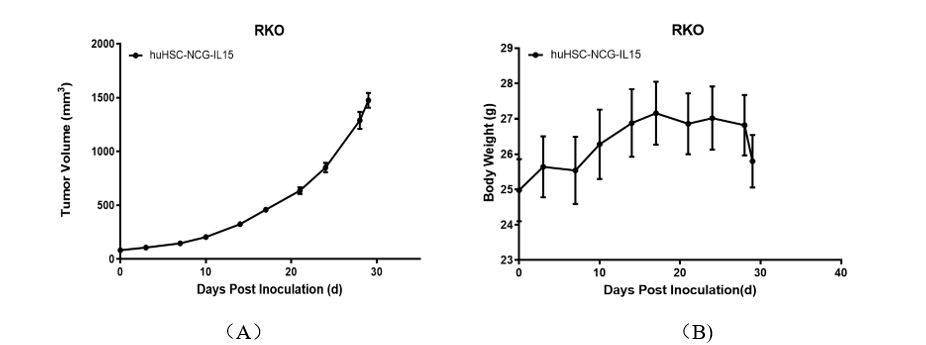
Cell Lines Resources
GemPharmatech maintains a comprehensive collection of well-characterized cell line resources, including murine-derived cell lines, genetically engineered mouse models with humanized target modifications, and human tumor cell lines, which are readily available to support various pharmacodynamic evaluations and oncology-related research applications.
-
- Cell Type Name
- RKO
-
- Disease Type
- Colorectal Cancer
-
- Cell Type
- CDX Cell
-
- Species Origin
- Homo sapiens
-
- Host Mouse
- NCG
I. Tumorigenesis Validation Data
The RKO cell line is a human colon cancer cell line that can form tumors normally when subcutaneously inoculated in immunodeficient mice, including NCG (T001475) and BALB/c-Nude (D000521).

Figure 1 (A) Subcutaneous tumor growth curves of the RKO cell line in NCG and BALB/c-Nude mice; (B) Body weight changes of mice during tumor formation in NCG and Nude mice (n=5)
Validation confirmed that the RKO cell line can also form tumors normally in humanized immune system mice huHSC-NCG-hIL15 (T038070).

Figure 2 (A) Tumor growth curves of RKO in the huHSC-NCG-hIL15 subcutaneous inoculation model; (B) Body weight changes of mice in the huHSC-NCG-hIL15 subcutaneous inoculation model (n=5)
II. Detection of Tumor Target Expression
In the BALB/c-Nude (D000521) subcutaneous inoculation model, RKO tumors highly express hPDL1+ and hCD47+, with expressions of hCD155+, hB7H3+, and hCD73+ also detected.

Figure 3 Expression of tumor targets in RKO tumors from the Nude subcutaneous inoculation model (n=5)
III. TILs Analysis Data
Tumor-infiltrating lymphocytes (TILs) data from the huHSC-NCG-hIL15 subcutaneous inoculation model with RKO show that the infiltration rates are: hCD8+ T cells (% of mCD45+) at 45.69%, hCD4+ T cells (% of mCD45+) at 34.28%, and Tregs (% of mCD45+) at 8.54%.

Figure 4 TILs data of RKO in the huHSC-NCG-hIL15 subcutaneous inoculation model
